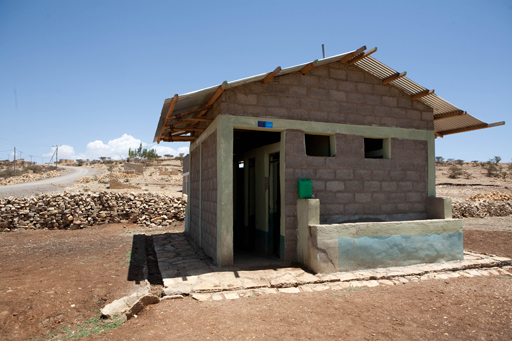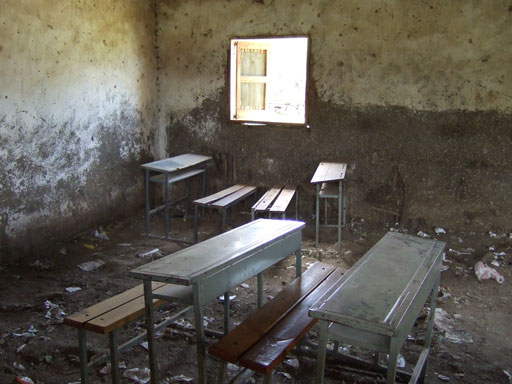13.3 Encouraging sustainable behaviour change
In Study Sessions 9 and 10, you learned about influencing behaviour in relation to improved sanitation and hygiene practices. Here we will consider how such behaviour change can be sustained.
The objective of any WASH promotion activity or intervention should be to ensure that achieved changes in behaviour are deeply rooted in the social and economic values of the community, rather than being temporary. In this way, behaviour change in communities resulting from promotion activities can potentially be sustainable.
To encourage sustainable behaviour change, interventions should be planned and implemented with sustainability in mind. Monitoring and follow-up mechanisms should be put in place to ensure that communities do not revert back to old practices. In Section 13.2, we mentioned factors that affect sustainability of WASH facilities in terms of planning, construction and post-construction stages. You can see in Table 13.2 that a similar concept applies to sustainability of WASH promotion and behaviour change interventions.
| Planning stage | Implementation stage | Post-implementation stage |
| In-depth assessment of existing situation: Before planning a promotion activity, investigate the existing level of knowledge, attitudes and hygiene practices. | Participatory implementation: All key sectors of the communities should be involved, allowing for possible adjustments in approach and methodology to ensure even stronger sustainability. | Monitoring for impact: Once promotion activities are completed, monitor changes in behaviour and consider messages for subsequent interventions. Monitoring also provides the basis for reinforcement in communities and advocacy with local government. |
| Communication strategy (channels, materials, agents): Based on assessment, identify preferred communication channels. Develop communication materials to disseminate messages through preferred and high impact channels. | Focus on families, particularly mothers: Working with mothers and school children for behaviour change helps improve and sustain impact in community-wide behaviour change. | Repeating the cycle: There is usually more than one behaviour to try to change in communities. Repeat the process from planning stage, to work on additional behaviour that was not addressed in previous phase. |
| Participatory planning: As in facility construction, ensuring participation, involvement and commitment of all stakeholders is crucial. | Focus on one message at a time: Hygiene and sanitation promotion work should focus on one behaviour at a time, rather than on multiple messages, to maximise the chance that behaviour change is sustained. | Reinforcement: Organise events at suitable intervals to reinforce messages, e.g. sanitation campaigns, street role-plays by students. |
One key consideration during the planning stage is the availability of adequate, well-functioning WASH facilities in the community. Promoting behaviour change in situations where there is no access to facilities is always challenging and rarely successful. Communities may agree to change their practice as a result of the communication work. However, if they do not have the means to actually practise the behaviour change, the work will be in vain.
You will remember from Study Session 8 that there is a wide range of determinants that will affect the behaviour of communities. The importance of WASH promotion is to bring about behaviour change in communities by creating adequate knowledge of safe hygiene behaviours and encouraging the necessary conditions for their full practice by all members of the community.
Describe how access and condition of facilities can influence school children’s behaviour in safe hygiene practices (a) where facilities are good, as shown in Figure 13.2 and (b) where facilities are poor and dirty, as shown in Figure 13.3.
The answers are as follows:
- a.Where facilities are clean, accessible and functional school children can practise what they learned and make changes in their day-to-day behaviour. Access to well-maintained facilities positively influences their behaviour.
- b.Where there is lack of access or facilities are not kept clean, school children will not be able to practise the learned behaviour – however good the promotion work. The result will be an increase in awareness, but not a practical change of behaviour. If there is no access to well-maintained facilities behaviour change in school children will be negative rather than positive.


You may find that even where hygiene promotion activities are undertaken and WASH facilities are adequate and functioning, communities are still not applying safe practices. This is a critical challenge encountered during behaviour change activities, underlining the need to remind communities continuously about safe practices until the desired behaviour becomes habit. Both the presence or absence of facilities and also the will to use them, can be critical factors to identify as opportunities for, or threats to, sustainable behaviour change.
Look at Tables 13.1 and 13.2 and compare them. What similarities and differences can you identify?
The tables are similar in that they both refer to factors affecting sustainability of WASH facilities at three distinct stages of a project cycle. They are different in that Table 13.1 summarises the facilities, whereas Table 13.2 summarises information relating to the user communities.
Improving facilities and influencing people’s behaviour are interventions that mutually reinforce the improvement of WASH situations in communities. They can be most effective when undertaken simultaneously.
13.2 Sustainability of WASH facilities
